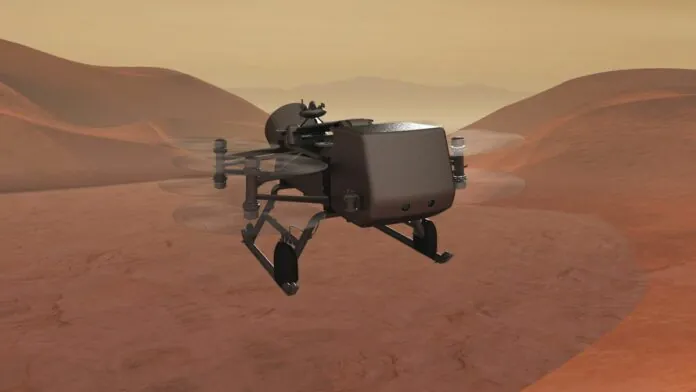© ROOT-NATION.com - Use of content is permitted with a backlink.
NASA has officially approved the Dragonfly rotorcraft project for the study of Titan, Saturn’s largest moon. The approval of the interplanetary mission planned for 2028 was preceded by several years of delays due to the pandemic and financial difficulties.

Titan, which is located at a distance of 1.2 billion km from Earth, is one of the most complex and attractive objects of study in the Solar System. It has a denser atmosphere than on Earth, which consists mainly of nitrogen and contains a significant amount of methane. The latter would be even more than the current 2.7%, but under the influence of sunlight, it forms complex hydrocarbons that form clouds and fall to the surface as rain – there are lakes of methane, ethane and other compounds. A water ocean may be hiding under the moon’s surface.
Exploring such a place is not an easy task. In January 2005, the American lander Huygens reached the surface of Titan, but the full-fledged research apparatus must be mobile. On the Moon or Mars, wheeled rovers cope with this task, but Titan’s surface is more like a swamp made up of petroleum byproducts. A more successful example is the Ingenuity Martian helicopter, which recently completed its mission, originally intended to last about a month, but its work stretched to almost three years.
Dragonfly meets the requirements. The energy source for the device is a radioisotope thermoelectric generator, and it is set in motion by eight aluminium-titanium rotors – the Dragonfly octocopter is intended for conducting geological research, studying the organic chemistry of Titan and searching for biosignatures, although the satellite is not considered a promising candidate for the presence of extraterrestrial life. Flying from place to place, the device will study the chemistry of the area using a backscatter system and a mass spectrometer. It will also record local weather conditions and seismic data, which will help learn more about Titan’s internal structure.
Further delays in sending Dragonfly will mean the need for larger and more powerful rockets – the landing of the device on Titan should take place in 2034.
Read also:
- The Boeing Starliner capsule is one step closer to space flight
- Sierra Space presented a radically new concept for delivering cargo into orbit


